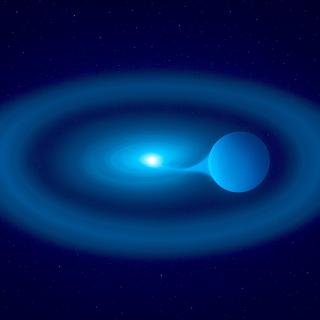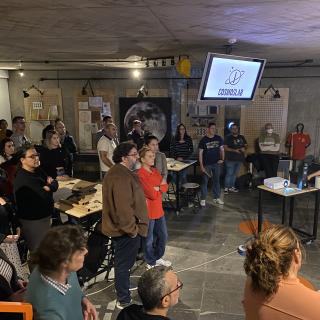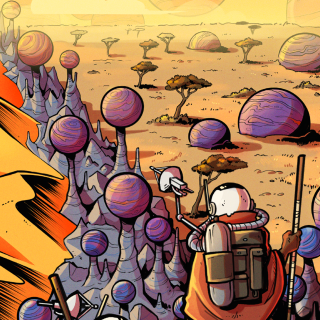The XXII Canary Islands Winter School of Astrophysics will be held from Monday 15th to Friday 26th November at the Hotel Nivaria in San Cristóbal de La Laguna, Tenerife. The School's aim is to equip young scientists with an understanding of the theoretical, experimental and analytical tools used in Asteroseismology.
Teaching at this twenty-second edition of the Winter School will be eight world-renowned scientists whose work has helped bring about a big leap forward in Asteroseismology. For two weeks more than thirty doctoral and post-doctoral students, from seventeen different countries, will take an in-depth look at how Asteroseismology can expand our knowledge of the structure, dynamics and evolution of stars. The School will be taught very interactively, with students presenting their own research, participating in discussion groups and working on joint projects with the teachers.
As well as attending classes students will visit the headquarters of the Instituto de Astrofísica de Canarias at La Laguna (Tenerife) on the 16th November, the Observatorio del Roque de Los Muchachos (La Palma) on the 17th and the Observatorio del Teide (Tenerife) on the 24th. As in previous years a book containing the material from the School will be published by Cambridge University Press.
Professor Donald Kurtz of the University of Central Lancashire (United Kingdom) will also give a public lecture on `The Songs of the Stars: The Real Music of the Spheres´ at the Museo de la Ciencia y el Cosmos in La Laguna on Friday 19th November at 7.00 pm. The lecture will be in English with simultaneous interpretation into Spanish.
The seismological revolution
At the end of the 1970s the discovery of oscillations in the Sun gave rise to a new scientific discipline: Helioseismology. This new discipline made it possible to gather information about what is beneath the Sun's surface for the first time, as the frequencies identified were used to survey the Sun's interior in the same way as seismologists use sound waves on our planet to look inside the earth.
The so-called "beats of the Sun" were "listened to" by networks of earth telescopes like GONG (Global Oscillation Network Group) and satellites like SoHO (Solar and Heliospheric Observatory), as well as the SDO (Solar Dynamics Observatory), which was launched at the beginning of this year. Helioseismology has expanded our understanding of the Sun's rotation and helped us measure the width of its external convection zone, just two of the many achievements that it has made possible.
It was just a matter of time before this new discipline would be used to start opening up other stars. At the end of the 1980s the term Asteroseismology was coined, but data from the early observations was too inaccurate for the technique to be used to detect weak oscillations from objects much farther away than the Sun. According to Pere L. Pallé, a researcher at the Instituto de Astrofísica de Canarias and one of the organisers of the latest edition of the Winter School: "the problem was in the quality of the observations, not in the technique per se."
Pallé recalls that in the early days it seemed as though Asteroseismology "was never going to give us a big leap forward like Helioseismology". That all changed, however, with the spectacular results from space missions like CoRoT (COnvection ROtation and planetary Transits) and especially Kepler, which is sending back so much data that there is now a question over whether the research community can muster enough resources, both people and machines, to process it. Training young people in the observation techniques, theory, modelling and computing methods needed for this field is the best way to ensure that this, the most promising and far-reaching discipline in modern Astrophysics, delivers all that is expected of it and more.
The XXII Canary Islands Astrophysics Winter School is organised by the IAC with support from the Excmo.Ayuntamiento de San Cristóbal de La Laguna, the Cabildo Insular de Tenerife and the Ministerio de Ciencia e Innovación, with the collaboration of the Universidad de La Laguna.
Lecturers and topics:
Dr.Thierry Appourchaux, Institut d´Astrophysique Spatiale - IAS (France): “From instrumentation to data analysis”
Prof. Tim Bedding, University of Sydney (Australia): “Solar-like Oscillations: An Observer's Perspective “
Prof. Jorgen Christensen-Dalsgaard, Aarhus University (Denmark): “Advanced Topics in Asteroseismology”
Prof. Donald Wayne Kurtz,University of Central Lancashire (United Kingdom): “An observer's views and tools”
Dr. Sarbani Basu, Yale University (United States of America): “Studying stars through frequency inversions”
Dr. William Chaplin, University of Birmingham (United Kingdom): “Perspectives on Helioseismology”
Dr. Steve Kawaler, Iowa State University (United States of America): “Learning Physics from the Stars: It's All In the Coefficients”
Dr. Mario Joao Monteiro, Centro de Astrofísica da Universidade do Porto-CAUP (Portugal): “Seismic probes of the Stellar Interior”
Organizing Committee
P.L. Pallé
C. Esteban
F. Sánchez Martínez
More information on Helio and Asteroseismology:



